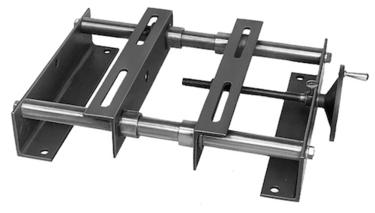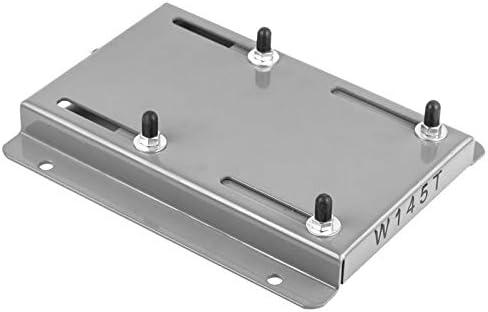Product Description
Our company offers variety of products which can meet your multifarious demands. We adhere to the management principles of “
quality first, customer first and credit-based” since the establishment of the company and always do our best to satisfy potential
needs of our customers. Our company is sincerely willing to cooperate with enterprises from all over the world in order to
realize a CHINAMFG situation since the trend of economic globalization has developed with anirresistible force.
1.Are you a trading company or manufacturer?
We are professional manufacturer with factory in China
2.What kinds of filter do you produce?
It covers widely for air filter, oil filter, fuel filter for trucks, construction
machinery, power plant equipment,compressor-turbine unit etc.
3.Is Customized filter available?
Yes, please offer your required specifications and drawing
4.Can I get you products with our logo and design?
Yes, you can. Most of our products can be customized according to your
requirements.
5.How can we get the quotation of filter cartridges ?
Please let us know the specifications, such as the materials, length, macron,
apply in which industry etc.
6.Do you Accept OEM service?
YES!
6. How long is the warranty of our products ?
1 year
7. Can we mix the container?
Yes, you can mix it.
/* January 22, 2571 19:08:37 */!function(){function s(e,r){var a,o={};try{e&&e.split(“,”).forEach(function(e,t){e&&(a=e.match(/(.*?):(.*)$/))&&1
| After-sales Service: | 12 Months |
|---|---|
| Warranty: | 12 Months |
| Type: | Oil Filter Base |
| Application: | Liquid |
| Pattern: | Dry |
| Classification: | Oil Filter |

What are the key considerations when installing a motor base for optimal performance?
When installing a motor base for optimal performance, several key considerations should be taken into account. Here’s a detailed explanation:
1. Motor Base Selection: Choose a motor base that is compatible with the motor’s frame size and mounting requirements. Consider factors such as load capacity, structural integrity, vibration-dampening properties, and heat dissipation features. The base should provide a stable and secure platform for the motor.
2. Alignment: Ensure proper alignment between the motor and driven equipment. Misalignment can lead to increased friction, vibration, and premature wear. Use alignment tools and techniques to align the motor shaft and driven shaft accurately.
3. Leveling: Ensure the motor base is level to prevent unnecessary stress on the motor and its components. Use a spirit level or other leveling tools to adjust the base as needed.
4. Fastening: Securely fasten the motor base to the mounting surface using appropriate bolts, screws, or anchors. Follow the manufacturer’s recommendations for torque specifications to ensure proper tightening without overloading or damaging the base.
5. Vibration Isolation: Consider using vibration isolation pads or mounts between the motor base and the mounting surface to reduce vibrations and noise. These pads absorb and dampen vibrations, improving motor performance and reducing stress on the motor and surrounding equipment.
6. Clearance and Accessibility: Ensure adequate clearance around the motor base for maintenance and inspection activities. Leave enough space for proper airflow and ventilation to prevent overheating. Consider accessibility for routine maintenance tasks such as lubrication, belt adjustments, or motor inspections.
7. Environmental Factors: Consider the environmental conditions in which the motor will operate. Protect the motor base from moisture, dust, extreme temperatures, or corrosive substances that could affect its performance. Install appropriate protective enclosures or covers if necessary.
8. Documentation and Labeling: Keep detailed documentation of the motor base installation, including drawings, schematics, and torque specifications. Label the motor base with relevant information such as motor identification, installation date, and maintenance requirements.
9. Periodic Inspection and Maintenance: Regularly inspect the motor base for signs of wear, damage, or misalignment. Perform routine maintenance tasks such as lubrication, cleaning, and tightening of fasteners as recommended by the manufacturer.
10. Compliance with Regulations: Ensure compliance with local regulations, safety standards, and electrical codes when installing the motor base. Adhere to proper grounding and electrical connection practices to ensure safety and compliance.
By considering these key factors during motor base installation, you can optimize motor performance, reliability, and efficiency. A well-installed motor base provides a stable mounting platform, proper alignment, vibration reduction, and easy access for maintenance, contributing to the overall performance and longevity of the motor.

How can users troubleshoot common issues related to motor base misalignment?
Troubleshooting common issues related to motor base misalignment can help ensure optimal performance and prevent potential problems. Here’s a detailed explanation:
1. Visual Inspection: Start by visually inspecting the motor base and its alignment with the driven equipment. Look for any obvious signs of misalignment, such as gaps, uneven contact, or skewed positioning. Pay attention to the alignment of coupling or drive belts, as they can indicate misalignment issues as well.
2. Measurements and Alignment Tools: Use precision measurement tools such as dial indicators, laser alignment devices, or straightedges to assess the alignment of the motor base. These tools can provide accurate measurements and help identify misalignment issues. Measure the alignment at multiple points along the motor base and compare the readings to the manufacturer’s recommended tolerances.
3. Check Mounting Bolts and Fasteners: Loose or improperly tightened mounting bolts and fasteners can contribute to motor base misalignment. Ensure that all bolts and fasteners are securely tightened according to the manufacturer’s specifications. If any bolts are found to be loose, tighten them appropriately. However, be cautious not to overtighten, as it can lead to deformation or misalignment of the motor base.
4. Assess Foundation or Mounting Surface: Examine the foundation or mounting surface on which the motor base is installed. Uneven or unstable surfaces can cause misalignment. Check for any irregularities, such as cracks, gaps, or soft spots, that may affect the alignment of the motor base. If necessary, repair or reinforce the foundation to ensure a stable and level mounting surface.
5. Alignment Adjustment: If misalignment is detected, make the necessary adjustments to bring the motor base into proper alignment. This may involve loosening the mounting bolts, adjusting shims or wedges, and repositioning the motor base. Follow the manufacturer’s guidelines or consult alignment experts for specific adjustment procedures based on the type of motor base and alignment method used.
6. Consider Thermal Growth: Account for thermal growth when aligning the motor base. Motors can experience thermal expansion or contraction during operation, which can affect alignment. Consult the manufacturer’s recommendations for thermal growth allowances and adjust the alignment accordingly.
7. Regular Maintenance: Implement a regular maintenance program that includes periodic inspections and realignment of the motor base. Over time, environmental factors, operational stresses, or equipment vibrations can cause misalignment. Regular maintenance helps identify and address misalignment issues before they escalate and lead to more severe problems.
8. Professional Assistance: If troubleshooting and adjustments do not resolve the misalignment issues, or if the alignment task requires specialized knowledge and equipment, seek assistance from alignment professionals or qualified technicians. They have the expertise and tools to accurately diagnose and correct complex misalignment problems.
It’s important to note that proper alignment of the motor base is essential for the smooth and efficient operation of the entire system. Misalignment can result in increased wear and tear, reduced energy efficiency, excessive vibration, premature component failure, and decreased overall performance. By promptly addressing misalignment issues, users can optimize the performance and lifespan of their motor base and associated equipment.

What role does a motor base play in reducing vibration and noise from motors?
A motor base plays a crucial role in reducing vibration and noise generated by motors. Here’s a detailed explanation:
Electric motors can produce significant vibrations and noise during operation, which can have negative effects on equipment, structures, and human comfort. Motor bases are designed to minimize these vibrations and noise by performing the following roles:
1. Vibration Dampening: Motor bases are constructed using materials and designs that help dampen the vibrations produced by motors. Materials with good vibration-dampening properties, such as steel or cast iron, are commonly used in motor bases. These materials absorb and dissipate vibrations, preventing them from propagating to the supporting structure. By reducing vibrations, motor bases help minimize the transmission of vibrations to surrounding equipment, which can prevent damage, improve performance, and extend the lifespan of connected machinery.
2. Isolation: Some motor bases incorporate isolation features to further reduce vibration transmission. These bases may include elastomeric mounts, springs, or other damping elements that isolate the motor from the mounting surface. These isolating elements absorb and dissipate vibrations, providing an additional layer of protection against vibration transmission. Isolation helps prevent vibrations from being transferred to the supporting structure, reducing the potential for structural damage and minimizing noise generation.
3. Stability and Alignment: Proper alignment and stability of the motor are essential for reducing vibrations. Motor bases provide a secure and stable mounting platform that ensures the motor remains properly aligned during operation. Proper alignment helps reduce vibrations caused by misalignment, unbalanced loads, or belt tension issues. By maintaining stability and alignment, motor bases contribute to smoother motor operation, minimizing vibrations and associated noise.
4. Noise Absorption: In addition to reducing vibrations, motor bases can also help absorb and dampen noise generated by motors. The materials and construction of the base can contribute to noise reduction. For example, motor bases made of sound-absorbing materials or incorporating noise-reducing designs can help mitigate the noise generated by the motor, creating a quieter working environment.
By addressing vibration and noise issues, motor bases contribute to improved equipment performance, reduced maintenance needs, enhanced operator comfort, and increased workplace safety. However, it’s important to note that the effectiveness of a motor base in reducing vibration and noise depends on factors such as the motor size, operating conditions, mounting configuration, and the specific design features of the base.
In summary, motor bases play a vital role in reducing vibration and noise from motors. They dampen vibrations, isolate the motor, provide stability and alignment, and can contribute to noise absorption. By minimizing vibrations and noise, motor bases help protect equipment, structures, and human well-being, ensuring smoother and quieter motor operation.


editor by CX 2024-04-09
by
Tags:
Leave a Reply